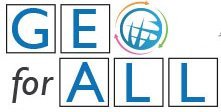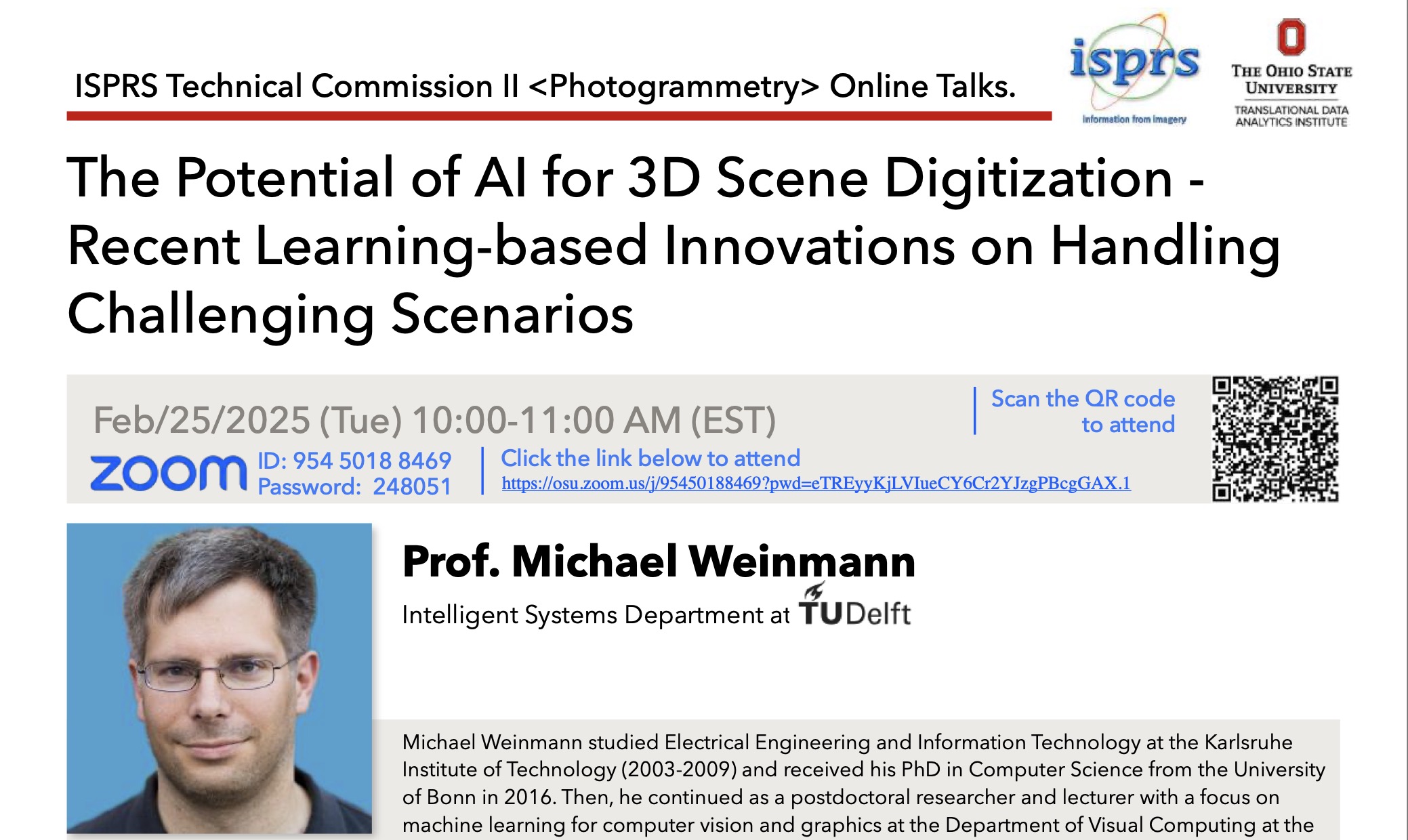Conferenza sul tema dal Prof. Dr. Michael Weinmann. Feb 25, 2025 (Tue) 10-11 AM (EST) | 4-5 PM (CET) - ISPRS Technical Commission II Online Talks.
L'intelligenza artificiale (AI) ha dimostrato di avere un grande potenziale in molti settori. Questa presentazione esplorerà come l’AI sta trasformando la cattura e la modellazione di scene 3D. Dopo una breve panoramica sui principali sviluppi della modellazione 3D basata su immagini, verranno illustrati i progressi più recenti ottenuti grazie all’uso dell’apprendimento automatico. In particolare, si parlerà di tecniche avanzate come Neural Radiance Fields (NeRFs) e 3D Gaussian Splatting (3DGS), che migliorano la rappresentazione delle scene 3D utilizzando informazioni preesistenti (come regole strutturali, principi fisici e reti neurali).
Si discuteranno anche le estensioni di NeRFs e 3DGS per:
- Aumentare la robustezza dei modelli
- Rappresentare scene con più spettri di luce
- Gestire scenari con pochi punti di vista
- Affrontare situazioni complesse, come la presenza di specchi
Inoltre, si analizzerà come migliorare la rappresentazione delle scene 3D attraverso un’integrazione più stretta tra analisi e cattura delle immagini. Infine, la presentazione concluderà evidenziando le attuali limitazioni di queste tecnologie e suggerendo possibili sviluppi futuri.
Brief summary
Artificial intelligence (AI) has been demonstrated to offer breakthrough potential for numerous applications. This presentation will delve into how AI revolutionizes the field of 3D scene capture and modeling. After briefly discussing major developments in image-based 3D scene modeling, the presentation will demonstrate the potential of current achievements in learning-based scene modeling based on leveraging various types of priors (e.g. based on structural or procedural rules, neural priors, physics-informed learning, etc.) as well as based on recent scene representations such as Neural Radiance Fields (NeRFs) and 3D Gaussian Splatting (3DGS). This includes the discussion of extensions to NeRFs and 3DGS to further increase robustness, allow multi-spectral scene representation, handle sparse-view scenarios and handle complex
scenarios such as scenes with mirrors. Furthermore, the presentation will discuss the enrichment of 3D scene representations based on the tighter coupling of scene analysis and capture. Finally, the presentation will conclude with the discussion of remaining limitations as well as potential directions for future work.
Presenter short bio
Michael Weinmann studied Electrical Engineering and Information Technology at the Karlsruhe Institute of Technology (2003-2009) and received his PhD in Computer Science from the University of Bonn in 2016. Then, he continued as a postdoctoral researcher and lecturer with a focus on machine learning for computer vision and graphics at the Department of Visual Computing at the University of Bonn (until 2021) as well as a project coordinator of the X-Rite Graduate School on Digital Material Appearance. In 2021, he joined Delft University of Technology as an Assistant Professor in the Intelligent Systems Department. Working at the intersection of computer vision, computer graphics and machine learning, his research targets at scene understanding from image or video data from diverse sensors (i.e., RGB or RGB-D information, depth maps, multi-spectral measurements, etc.), with a focus on accurate, efficient capture and representation of 3D scenes as well as their interpretation and visualization. Thereby, a particular focus lies on the development of robust solutions for complicated scenarios based on leveraging dedicated priors such as structural or procedural rules, neural priors or physics-informed machine learning. Respective research outcomes were used in interdisciplinary application scenarios including robotics, telepresence/teleoperation in live-captured scenes, medical applications as well as applications in cultural heritage, virtual prototyping, civil engineering, architecture, and arts.
Link to the event
https://www2.isprs.org/commissions/comm2/activities/online_talk_series/
Zoom link:
https://osu.zoom.us/j/95450188469?pwd=eTREyyKjLVIueCY6Cr2YJzgPBcgGAX.1
ID: 954 5018 8469 Password: 248051
Flyer:
https://www2.isprs.org/media/ep5pynwt/feb2025-isprs-technical-commission-ii-photogrammetry-online-talks.pdf
Registration: Not Required




